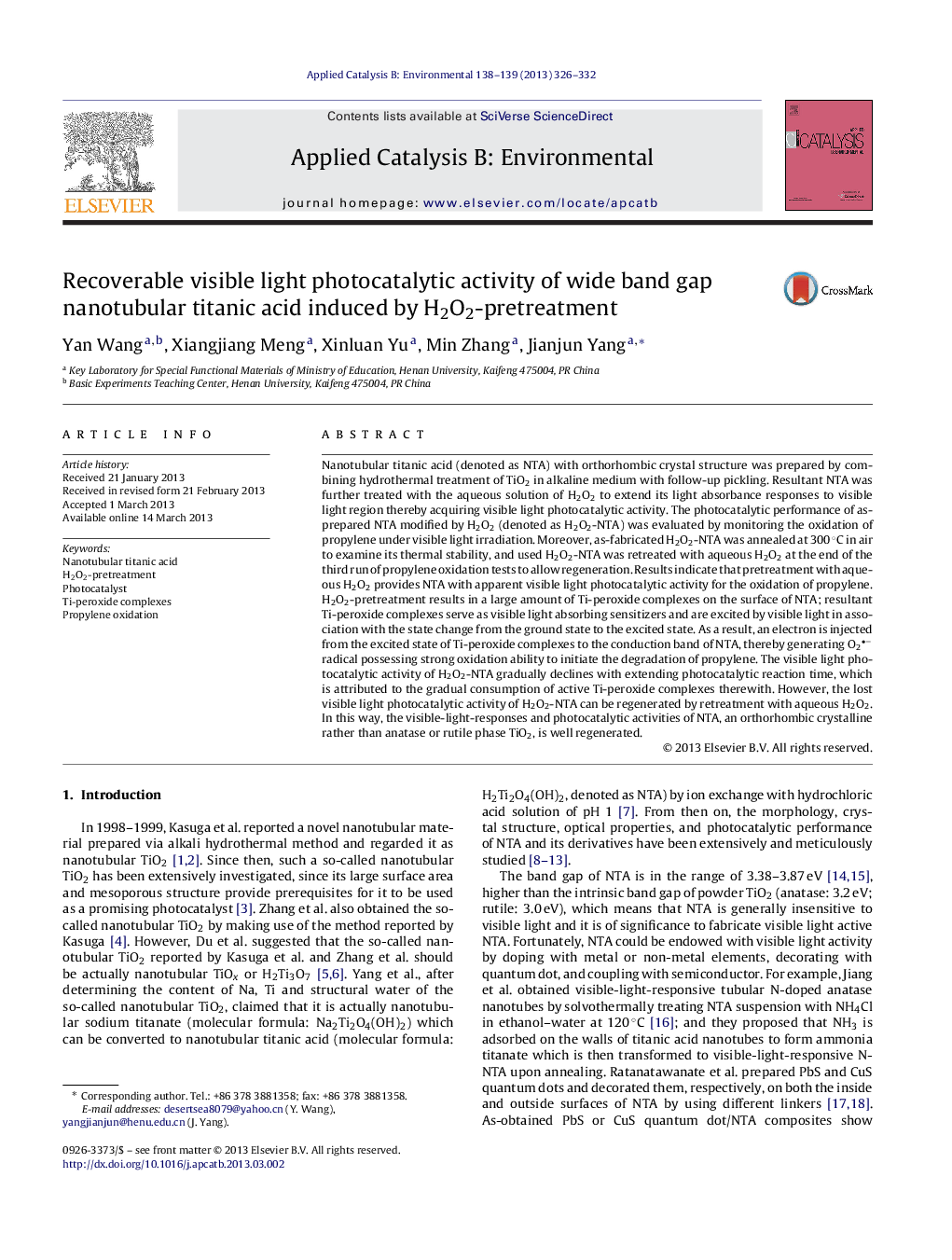| Article ID | Journal | Published Year | Pages | File Type |
|---|---|---|---|---|
| 46240 | Applied Catalysis B: Environmental | 2013 | 7 Pages |
•NTA is endowed with visible light response by H2O2-pretreatment.•Ti-peroxide complexes is formed on the surface of NTA after H2O2-pretreatment. Ti-peroxide complexes serve as visible light absorbing sensitizers.•The excited state of Ti-complexes injects an electron to the conduction band of NTA.•The electron is captured by O2 to generation of O2− for oxidation of propylene.
AbsrtactNanotubular titanic acid (denoted as NTA) with orthorhombic crystal structure was prepared by combining hydrothermal treatment of TiO2 in alkaline medium with follow-up pickling. Resultant NTA was further treated with the aqueous solution of H2O2 to extend its light absorbance responses to visible light region thereby acquiring visible light photocatalytic activity. The photocatalytic performance of as-prepared NTA modified by H2O2 (denoted as H2O2-NTA) was evaluated by monitoring the oxidation of propylene under visible light irradiation. Moreover, as-fabricated H2O2-NTA was annealed at 300 °C in air to examine its thermal stability, and used H2O2-NTA was retreated with aqueous H2O2 at the end of the third run of propylene oxidation tests to allow regeneration. Results indicate that pretreatment with aqueous H2O2 provides NTA with apparent visible light photocatalytic activity for the oxidation of propylene. H2O2-pretreatment results in a large amount of Ti-peroxide complexes on the surface of NTA; resultant Ti-peroxide complexes serve as visible light absorbing sensitizers and are excited by visible light in association with the state change from the ground state to the excited state. As a result, an electron is injected from the excited state of Ti-peroxide complexes to the conduction band of NTA, thereby generating O2− radical possessing strong oxidation ability to initiate the degradation of propylene. The visible light photocatalytic activity of H2O2-NTA gradually declines with extending photocatalytic reaction time, which is attributed to the gradual consumption of active Ti-peroxide complexes therewith. However, the lost visible light photocatalytic activity of H2O2-NTA can be regenerated by retreatment with aqueous H2O2. In this way, the visible-light-responses and photocatalytic activities of NTA, an orthorhombic crystalline rather than anatase or rutile phase TiO2, is well regenerated.
Graphical abstractTi-peroxide complexes are formed on the surface of NTA upon treatment with H2O2 functioning as visible light absorbing sensitizers. These surface complexes can be excited by visible light in association with the state change from ground state to excited state, while NTA functions as an electron acceptor to accept an electron which is injected from the excited state of Ti-peroxide complexes at its conduction band thereby generating TiOOH radical. TiOOH radical is highly active and tends to self-react to resume the original TiOH species in association with releasing O2. Released O2 captures a conduction band electron to generate O2− radical possessing strong oxidation ability thereby initiating the degradation of propylene.Figure optionsDownload full-size imageDownload as PowerPoint slide
